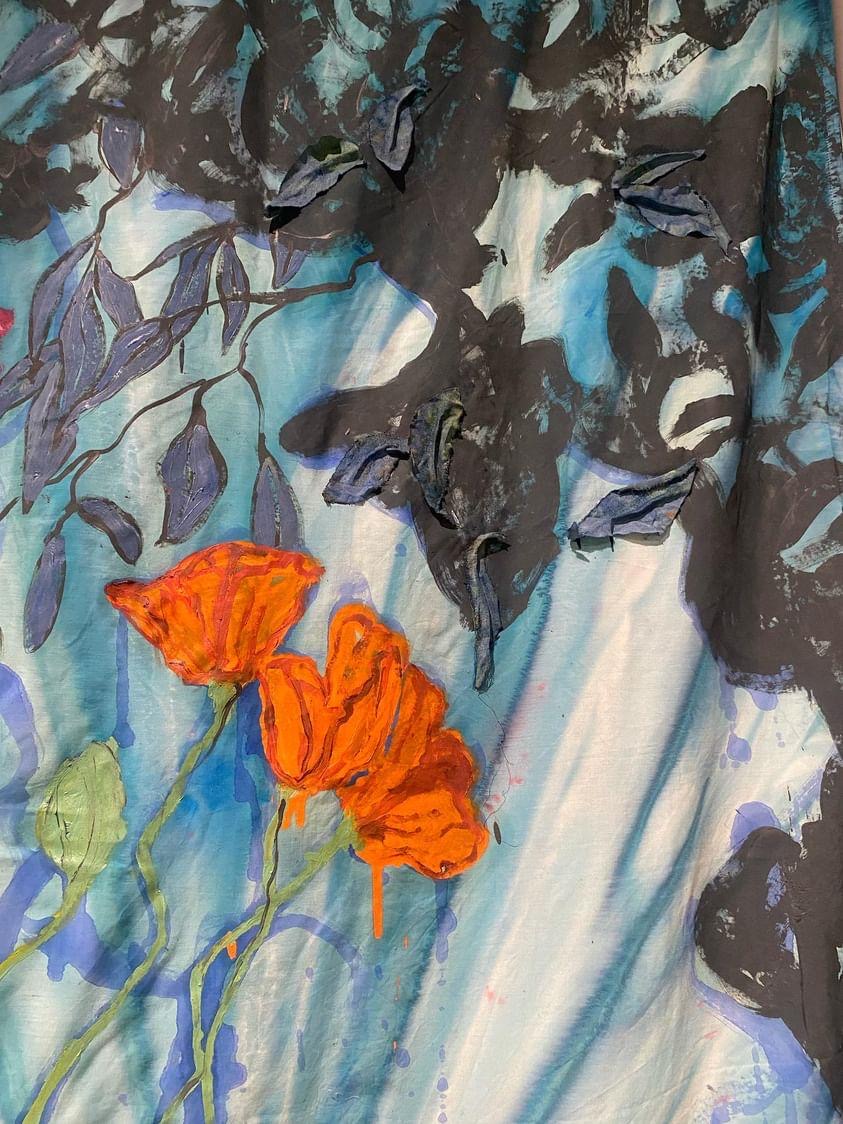Recently shown in Concordia’s VAV Gallery’s temporary exhibition Cycles of Existence, Dix shared their process and inspiration.
From Oct. 23 to Nov. 2, the Cycles of Existence exhibition at the VAV Gallery featured a number of Concordia’s Fine Arts students who explore the mysterious cycles and patterns of history in their work.
“Growth, the seasons, emotions, our bodies, strife in the world, breathing, everything we know seems to exist in a cycle,” stated the VAV Gallery on their Instagram. “Cycles of Existence explores exactly this—the cyclical nature of life, either in the subconscious, the physical, or the abstract.”
Caitlin Dix currently studies at the undergraduate level of the Concordia visual arts program. The Concordian spoke with the artist at the VAV’s opening reception for Cycles of Existence about their own installation, Tender Gardens.
Dix described their work as the display of archived family moments that captures their deep connection with nature through gardening, food preparation and sharing food with their family. Dix’s artistic practice encapsulates their childhood nostalgia, family heritage and generational practices. The ritualistic relationship that food has to family and nature emerges as a central theme in Tender Gardens.
In this exhibition, they represent the women of their family, particularly their grandmother and mother, as modern-day gatherers—the active sustainers of the community and their family. Dix said that appreciating and caring for nature is inseparable from their family’s traditions.
The installation involved three larger-than-life unstretched canvases, suspended from the ceiling. Broad strokes of bright colors—greens, blues and purples with the occasional orange or red detail—draw the viewer into a scene of Dix’s family members in a garden. The inviting work is meant to be fully immersive, where the viewer becomes a part of the scene in front of them—Dix’s grandmother smiles at them.
An interesting experience awaits viewers as they navigate through the installation. When standing in front of the pieces, viewers encounter a clear image of the scene and are invited to imagine themselves standing in the garden before them. The use of fiber materials to create textural illusions is incorporated into all three paintings, offering a multi-sensorial experience with objects, nature, and figures.
Moving around to the reverse side of the canvas, the image becomes murky—a ghostly impression of the paint seeping through the canvas. This blurry version of the scene appears almost like a memory, creating a temporal distance between the viewer and the subject of the painting. The relationship between the two sides of the installation speaks to the passage of time; the time between witnessing a moment and seeking to remember it months or perhaps years later.
See more of Caitlin Dix’s work on their Instagram account: @caitlin_dix_art.
